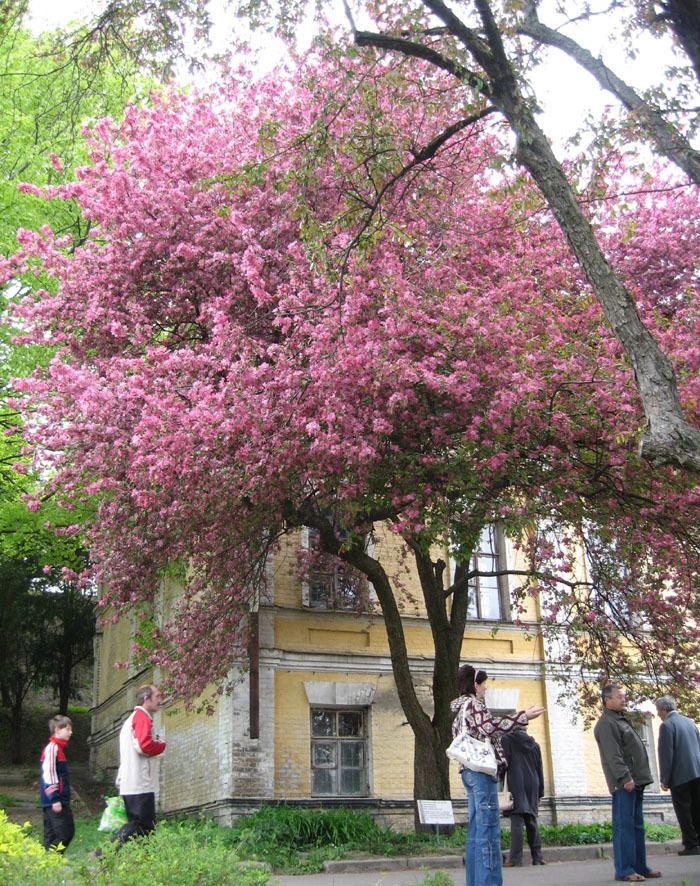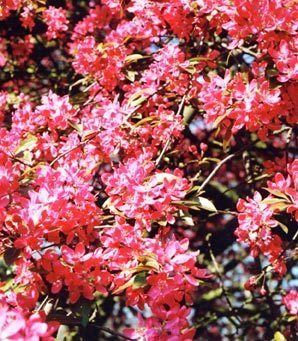Rank Species | ||
 | ||
Similar Rhododendron wardii, Salix myrtilloides, Malus baccata, Malus orientalis, Malus manshurica | ||
Malus niedzwetzkyana, or Niedzwetzky's apple, is treated as a distinct species by some botanists. while others have sunk it as a synonym of Malus pumila . It is distinguished from most other apples by its red-fleshed fruit, red skin, and red flowers. The tree is found in China, Afghanistan, Kazakhstan, Kyrgyzstan, and Uzbekistan. It is rare, often growing as an isolated tree, and is endangered throughout its range by agricultural encroachment and logging operations. Only 111 specimens of the tree are known to survive in Kyrgyzstan. The conservation group Fauna & Flora International is working to save and restore the species in that country, and has put M. niedzwetzkyana on its endangered list, brought it under its Global Trees Campaign, and planted over 1000 saplings in area forests in 2010 and 2011
Contents

The tree was introduced to the West c. 1890 by Georg Dieck at the Zöschen Arboretum, Germany, who grew it from seed sent by the Russian lawyer and amateur botanist Vladislav E. Niedzwiecki living in exile in Turkestan; Dieck later donated specimens to the Späth nursery, which exported the tree to the USA c. 1896.

Description

The tree is winter-hardy and drought-resistant, growing 5–8 m (16–26 ft) tall in the wild (<5 m under cultivation), with a globular crown and very dark purplish-brown bark.

New shoots are dark purple, and leaves range from purplish when new to dark green when mature. In the spring it puts out intensely magenta-rose flowers that are up to 4 inches in diameter. The skin of the fruit is deep red to purple-red (sometimes with a bluish, waxy bloom) and the flesh ranges from light to bright red, with dark reddish-brown seeds.

The fruit is edible and not very tart, with dry, somewhat chewy, flesh. In the Kashgar region of China near the Kyrgyzstan and Tajikistan borders, it is known as 'kisil alma': 'red apple'.
Cultivation

Malus niedzwetzkyana has been used to breed some modern red-leaved, red-flowered, and red-fruited apples and crabapples. It is believed to be the ancestor of Surprise, a pink-fleshed apple that was brought to the United States by German immigrants around 1840 and was later used by the horticulturist Albert Etter to breed some 30 pink- and red-fleshed varieties, the best-known of which is Pink Pearl. Another horticulturist, Niels Ebbesen Hansen, encountered M. niedzwetzkyana in the Ili valley, where he also met Niedzwetzky, in what was then the Russian region of Turkestan (but now Kazakhstan) during his 1897 expedition. Hansen began two breeding programs based on this unusual fruit, one aimed at developing a cold-hardy cooking and eating apple, and the other aimed at developing ornamental crabapples. His efforts resulted in the Almata apple and the Hopa crabapple, among other varieties. Some of these apples, as well as M. niedzwetzkyana itself, are being used for small-scale commercial production of rosé apple ciders.
